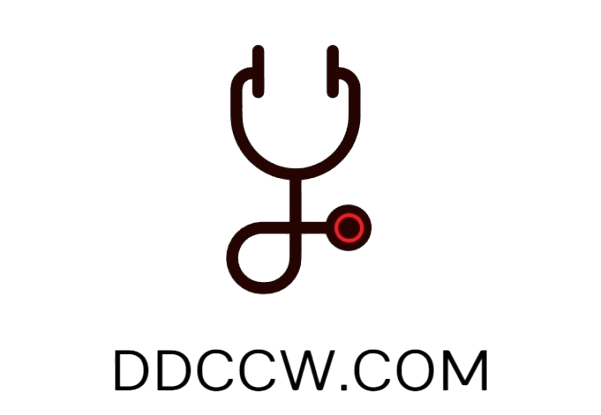For centuries, humans have looked to alternative and complementary medicine for healing. We have explored ancient techniques from traditional healing systems around the world, as well as modern approaches to health and wellbeing. Now, more than ever before, it’s important to be informed about the complementary and alternative medicines available and how they can help us. “Exploring Different Types of Alternative and Complementary Medicine” explores the frequently asked questions of this vast and varied field to help you make the most informed decisions about complementary and alternative medicine.

1. What is Alternative and Complementary Medicine?
Alternative and Complementary Medicine ( CAM ) is a broad group of medical and health care practices that are not generally considered to be part of conventional medicine. These practices originated from different cultures and regions around the world, both ancient and modern. Despite conventional medicine’s many advances in technology, many people still opt for CAM due to its natural, holistic approach.
CAM usually refers to practices and products that fall outside conventional medicine, including mental and spiritual aspects of health. Examples of commonly used CAM therapies include natural herbal medicines, acupuncture, homeopathy, massage, therapeutic and healing touch, relaxation and exercise techniques, problem-solving therapy, and spiritual or mental healing techniques.
CAM practitioners make use of a variety of techniques designed to promote well-being, and they might work collaboratively with conventional medical practitioners to provide a holistic approach to treatment. Many CAM practitioners believe in the importance of addressing biological, psychological, and social factors when providing treatment.
- Herbal Medicine
- Acupuncture
- Homeopathy
- Massage
- Therapeutic and Healing Touch
- Relaxation and Exercise Techniques
- Problem-Solving Therapy
- Spiritual and Mental Healing Techniques
CAM therapies are effective for a range of physical and mental health conditions. Evidence suggests that some CAM therapies are beneficial for some health conditions, while no clear evidence supports others. Many people report that CAM therapies make them feel better physically and mentally and can help them to cope with stress, pain, and illness.
CAM can be used to complement conventional medical treatments, and may also be used instead of conventional medicine when conventional treatments are unsuccessful. It is important to note that CAM therapies should be conducted by qualified practitioners and should not be used as a substitute for conventional medical care.
2. Exploring Different Types of Alternative and Complementary Medicine
Alternative and Complementary medicine continues to be a hot topic in many circles. While the mainstream medical community has reservations about some of these treatments, many people are looking beyond conventional medicine for their health needs. Although there are countless treatments that can be classified as ‘alternative’, here are some of the most popular ones that are being used today:
- Acupuncture: Most recognized in Western countries as a form of Alternative medicine, Acupuncture originated in China thousands of years ago. The patient receives small needle inserted into specific points in the body. It is believed that these points are connected to the energy of the body and can be manipulated to help treat various ailments.
- Ayurveda: An ancient Indian medical system, Ayurveda includes many aspects of prevention and healing, such as herbal remedies, diet, and lifestyle changes. The goal is to balance the mind, body, and spirit in order to lead a healthier life. Ayurvedic treatments can vary widely, depending on the patient’s condition and the practitioner’s philosophy.
- Homeopathy: Homeopathic medicine is based on the concept of “like cures like”, meaning that a substance that causes symptoms in a healthy individual can be used to treat the same symptoms in an ill person. Homeopathic remedies often involve mixing natural substances with water, and diluting and succussing them to release their active ingredients.
- Naturopathy: Naturopathy is a holistic approach to medicine, combining natural remedies such as herbs and food with lifestyle and dietary changes. It is based on the belief that the body has the power to heal itself, given the right environment and tools.
These are just a few of the most prominent forms of alternative medicine. Other, lesser known treatments exist, such as aromatherapy, energy work, and hypnosis. Regardless of the method, all of these treatments seek to promote better health in a natural way.
When looking into any of these therapies, it’s important to do your research and find a qualified practitioner who is well-versed in the treatment. Also make sure to talk to your doctor first to ensure that the treatments are safe and don’t interact with any medications you may be taking.
Alternative treatments are not a cure-all, but they can be a helpful complement to conventional medicine. With the right combination of treatments, one can find relief from various ailments and lead a healthier, more balanced life.
3. Understanding the Benefits of Alternative and Complementary Medicine
Alternative and complementary medicine have always been a part of human health, but they have only recently been studied in greater detail. Many modern scientific studies have revealed the various benefits that they can provide to individuals. Here are some of the major benefits that these forms of medicine offer:
- A Broad Range of Options – There is a wide range of alternative and complementary medicine, from herbal remedies to chiropractic treatments. This wide range of options means that people can find a treatment that works for them.
- Potential Effectiveness – Studies have shown that many alternative and complementary therapies can have a positive impact on a person’s health. They may be able to reduce pain, improve mood or even help treat serious illnesses such as cancer.
- Fewer Side Effects – Many of these therapies are natural and don’t have the same risks associated with medicines that have been created in a laboratory. This means that they may be a gentler and safer option for some individuals.
- Reduction of Stress – Many of these therapies, from meditation to yoga, are designed to reduce stress levels which can have a positive impact on wellbeing.
It is important to note, however, that it is always important to speak to a doctor before starting any kind of treatment. A doctor can advise the best course of action and make sure any treatment is as safe as possible. It is also important to make sure that any alternative or complementary treatments are regulated and approved.
These therapies can offer potential benefits to many people, but it is always important to take the time to research their efficacy and safety and to make sure that they are used responsibly. Understanding the potential benefits of alternative and complementary medicine can help people make informed decisions about their health.
4. Tips for Finding an Alternative or Complementary Practitioner
Do your research. Start by gathering information about the types of alternative and complementary treatments that are available. Ask people who have already benefited from these services for recommendations and read up online to arm yourself with the information you need to make an informed decision.
Choose an effective practitioner. It’s important to ensure that the alternative or complementary practitioner you are considering has a good reputation and qualifications. Ask for evidence of these details to ensure that the practitioner is knowledgeable and experienced before you commit.
Visit the premises. Once you’ve identified a practitioner you think is suitable, pay a visit to the premises. It’ll give you an insight into the environment in which you will be receiving your treatment and you can gain a sense of what to expect.
Talk to the practitioner. Having a conversation with the practitioner provides an opportunity to ask questions, discuss your expectations and share any concerns you have. This gives you a chance to clarify any doubts, build up rapport and feel confident in your choice.
Seek a second opinion. It doesn’t hurt to seek the opinion of another professional before making a decision. Obtain feedback and advice from people you trust who have expertise in the treatment you are considering.
Check credentials and references. Make sure to inquire about the practitioner’s credentials and the services provided. Look over references, recommendations and the scope of service that are offered to ensure that the practitioner is the right fit for you.
Understand the risks. Each type of treatment carries its own set of risks, so it’s important to have a thorough understanding of them prior to committing. Review the safety precautions, potential after effects and any other relevant information specifically related to the treatment you are interested in.
Exploring different types of alternative and complementary medicine offers numerous benefits. From natural healing therapies such as aromatherapy, to cutting-edge technologies like remote healing, there is a vast array of treatments to be discovered. Take time to find the one that works best for you. Your journey to a healthier and happier you begins here.

